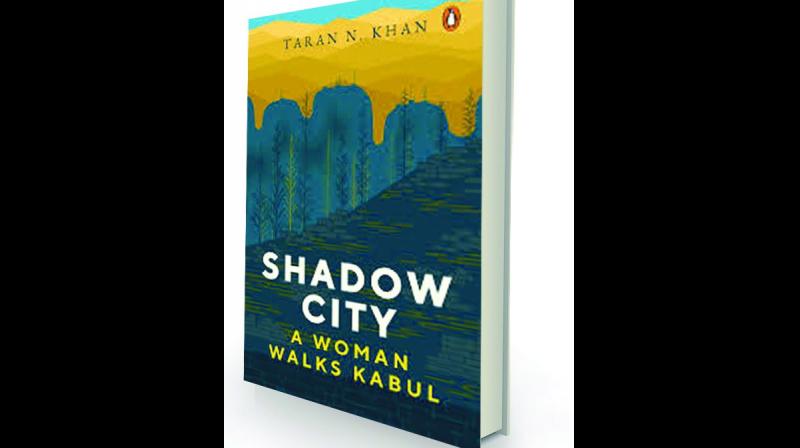An outsider chronicles a resilient Kabul

Afghanistan has seen decades of violence, economic uncertainty and political instability. Just when things seem to be improving a setback happens. The US Taliban conflicts continue. It is, therefore, not surprising that when Taran N. Khan goes to Kabul, the country’s capital to teach journalism, write and make films, she is told not to walk on the streets of the city. Walking is what she ends up doing. The result is A Shadow City, helping us discover the city and its people. It is not the Kabul we think we know from what we read from news stories.
Her father’s family are Pathans and Taran grew up in Aligarh, a university town near Delhi. Her grandfather, a scholar whose family moved to Bombay before Independence, told her stories of Kabul and exposed her to Persian poetry. Even before Taran goes to Kabul she feels an affinity towards it.
Taran arrives in Kabul in early 2006, five years after the overthrow of Taliban government by the US-led coalition forces. This is a period when there is an air of peace and optimism. She quotes a description of the city she reads some years after she arrives. “Like some people, certain cities seem to suffer from amnesia. Not that they have no past. Rather this past, no matter how glorious it may have been, will have left so few reminders, so few architectural vestiges, so few visible traces, that it remains something obscure, if not completely invisible.” In this amnesiac city, Taran finds a way to exhume history and excavate the present. There are cities within the city and walking is one way of discovering them.
In 2006, Kabul is rapidly expanding. The exodus of Afghans which began in the 1970s is being reversed. Nearly three million refugees are returning for the opportunities and the relative security the capital was perceived to provide.
It was a year of cautious optimism. On the slopes of Kabul’s mountains thousands of families built and rebuilt their damaged homes. Taran says Kabul was spreading. Although there was evidence of town planning once, the current growth was haphazard. She recalls a fraught walk one afternoon with a male colleague to a house in an informal hillside residence. “To get to the house my colleague had guided me along a path marked by white stones indicating the area that had been cleared of mines, or unexploded ordnance. This was the legacy of decades of conflict rendering Kabul one of the heavily mined cities in the world. ‘Red stones mean danger,’ I repeated in my head nervously as I walked on the path dozens of family took every
day. ‘White stones mean safety.’”
Not all her walks were so fraught: “Before dinner we walked to the bakery down the street returning with warm bread tucked between newspapers, crisp and with black seeds sprinkled on the top, fragrant enough to speed our steps home.”
The road to Kabul is made up of stories, says Taran. During one of her trips to the city, Taran forgets to bring her usual stock of reading material without which she is lost. “What began as a light-heartedly desperate search for books to fill my evenings turned into a series of walks through spaces that were shaped by the written word.” Walking showed her a way to read the city just as reading guided her walks through the city.
She discovers various ways of finding books as she wanders through Kabul. Kabul’s chic coffee shops where patrons were offered the pick of whatever books they liked off the shelves and were requested in turn to leave behind what books they could spare when they departed. There were books by war reporters, war photographs, glossy Lonely Planet guides and, predictably, many volumes of Kite Runner.
Baburnama, one of the books she is looking for, was introduced to her by her grandfather. She finds it on the shelves of the Shah M. Book Co, the iconic corner bookshop of Kabul. The owner, Shah Muhammad Rais, tells her that his bookshop has remained open through each of Kabul’s shifting eras, Communist, Mujahideen, Taliban, ISAF .
Taran finds unlikely titles in a small stall manned by Arash Ahmady, who works in a hospital and spends weekends selling books. She finds, among others, bound in soft blue leather a biography of M.K. Gandhi. In 1990 when the civil war moved to Kabul, families who could leave did. Most of the books in the stall are from embassies and cultural centres that hastily shut down.
Taran also discovers graveyards. It is a city where the dead are as much a part of the landscape as the living. There are graves with simple markers, graves with tombstones, graves for foreigners, some with hippie stone memorials. A beautifully carved headstone declares Billy Barman loves Joan, Jade, Hassan, Caldonia and Digger.
Taran not only walks, but she also talks, visits and uses cars and jeeps when she can’t walk. On a happier note, she meets a filmmaker who has continued to make Afghan romances during all the years of war and strife. She discovers the Afghan’s love for Indian films. She also witnesses budding romances in cafes and extravagant weddings in huge halls.
Kabul has had many false starts over the years. People who come with the hope of a new dawn give up and leave the city. Taran’s last visit is in 2014. The Shadow City is an unromantic but intensely felt account of her experiences and insights. However, she does not always reveal what is going on in her mind. As she says in the beginning walking in Kabul is like looking through a kaleidoscope. There it is. There it is not.
Sushila Ravindranath is a senior journalist and author of Surge: Tamil Nadu’s Growth Story

